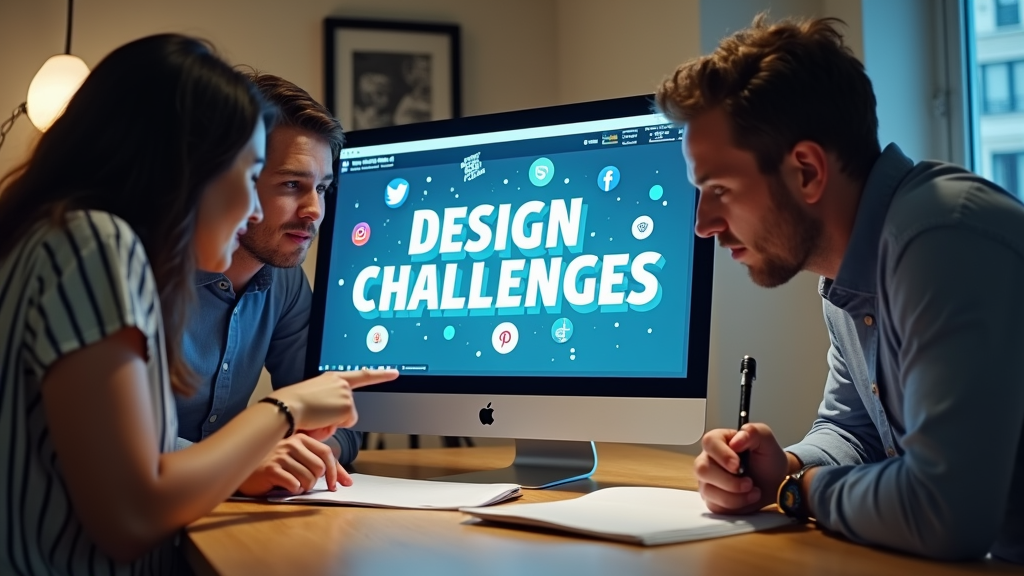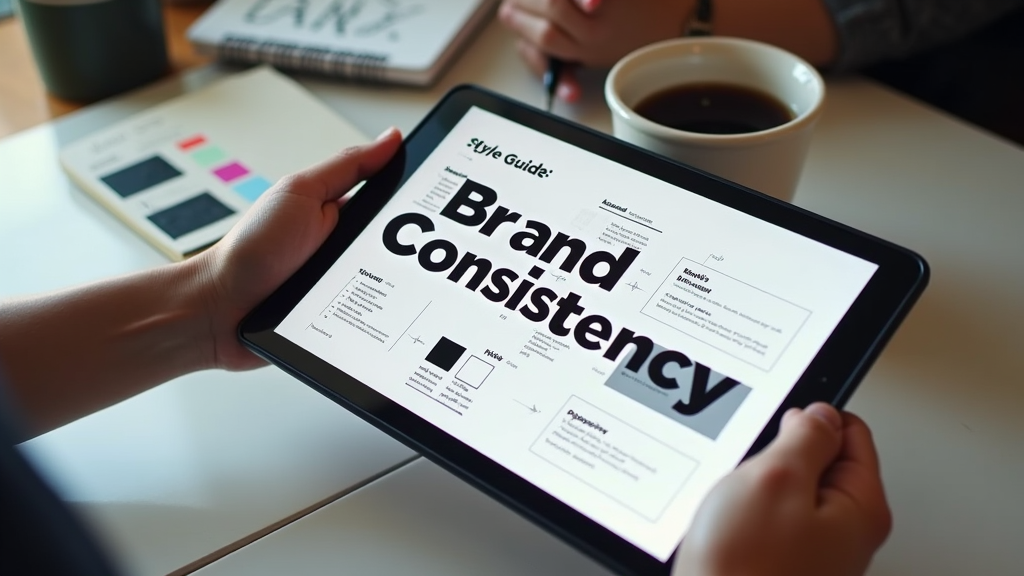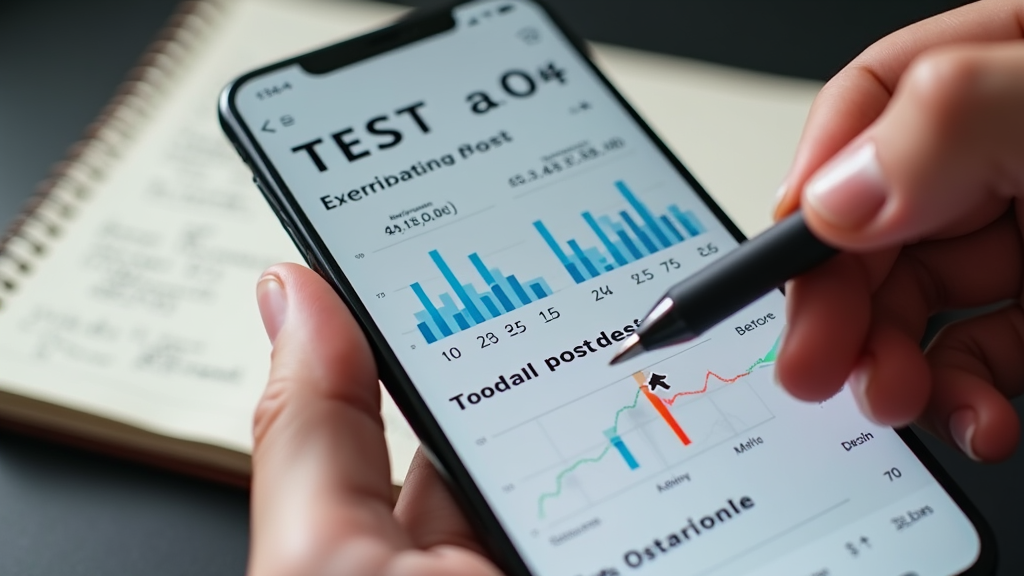
Introduction
Creating eye-catching social media designs can feel overwhelming when you don't have a design background. You might spend hours trying to match your brand colors, align text properly, or choose the right fonts for your posts on Instagram, LinkedIn, and other platforms.
This guide will show you how to create professional social media designs quickly and easily. You'll learn practical design tips that work across all major platforms, plus simple tricks to maintain brand consistency without getting stuck in the details. Whether you're working on a single post or planning content for the whole month, you'll find clear steps to improve your visual content.
Good design makes a real difference in social media success. Posts with professional visuals get 2.3 times more engagement than those without images. Your followers notice when your content looks polished and professional, which builds trust in your brand and helps you stand out in busy social feeds. Let's turn your design challenges into opportunities to capture attention and grow your audience.
Design Fundamentals
Good social media design helps your content stand out and get noticed. You need to understand a few basic design rules to create posts that look professional and catch people's attention. These fundamentals will help you create content that your audience will recognize and remember.
Here are the main design elements you should know:
Color Theory: Pick 2 to 4 colors that work well together and match your brand. Using consistent colors helps people remember your content better. Blues create trust, while oranges and reds grab attention.
Typography: Choose fonts that are easy to read on small screens. Use no more than 2 different fonts in your designs. Make sure your text is big enough to read on mobile phones.
Visual Hierarchy: Guide viewers' eyes to the most important parts of your design. Make key messages bigger or bolder. Leave enough white space around elements so they're easy to see.
When you use these design basics in all your social media posts, people will start to recognize your content even before they see your name. Think about how you can spot a Nike or Apple post right away because of their consistent design style. Your goal is to build that same kind of recognition with your audience.
Platform Requirements
Your social media designs need different sizes and formats for each platform. What works on Instagram might look wrong on LinkedIn. Getting these details right helps your content look good and perform better.
| Platform | Image Sizes | Aspect Ratios | Text Limits | Best Performing Content |
|---|---|---|---|---|
| Feed: 1080x1080px Story: 1080x1920px | Square: 1:1 Portrait: 4:5 Story: 9:16 | 2,200 characters | Photos, Reels, Carousels | |
| Feed: 1200x630px Link: 1200x628px | Landscape: 16:9 Square: 1:1 | 63,206 characters | Videos, Links, Photos | |
| Feed: 1200x627px Company: 1128x191px | Landscape: 1.91:1 Square: 1:1 | 3,000 characters | Articles, PDFs, Photos | |
| Single: 1600x900px Timeline: 1200x675px | Landscape: 16:9 Square: 1:1 | 280 characters | Photos, GIFs, Polls |
You can keep your brand looking consistent across platforms while following these requirements. Try creating a main design first, then adjust it for each platform's sizes. Save templates for your common post types to make this process faster. This way, your content will look professional everywhere without starting from scratch each time.

Brand Style Guide
A social media style guide helps you stay consistent with your posts. You don't need a complex document. Start with a simple one-page guide that lists your main brand elements and posting rules.
Your brand colors and fonts make your social media posts stand out. Pick 2 to 3 main colors that work well together and match your website. For fonts, choose one for headlines and another for regular text. Tools like Canva and Adobe Color can help you find good color combinations.
Templates save time and keep your posts looking similar. Create basic layouts for different types of content like quotes, product features, or tips. Include spots for your logo, text, and images. Save these templates where your team can easily find them. Update your templates every few months to keep your feed fresh while staying true to your brand style.
Design Workflow
A clear design workflow helps you create social media content faster and maintain brand consistency. You'll spend less time wondering what to do next and more time being creative with your designs.
1. Plan Your Content Calendar
Start by listing your social media posts for the week or month. Include important details like post types, dimensions, and brand elements you'll need. This helps you spot patterns and group similar designs together.
2. Create Your Templates
Build templates for your common post types. You might need different ones for quotes, product features, or announcements. Save your brand colors, fonts, and logo placement in each template so they're ready to use.
3. Design in Batches
Group similar posts together and design them at once. If you're creating quote graphics, make all of them in one session. This keeps you in a creative flow and speeds up your work.
4. Review and Refine
Look at all your designs together to check for consistency. Make sure your branding looks uniform and your message is clear across all posts.
You can save even more time by using automation tools. Many design platforms offer features like:
Quick Resize: Create one design and automatically adjust it for different social media platforms Color Schemes: Save and apply your brand colors with one click Asset Libraries: Store and organize your logos, images, and other design elements
Remember to update your workflow as you learn what works best for your team. A good process grows with you and makes design work feel less like a chore.
Visual Content Types
Social media platforms support many types of visual content. You can create images, videos, stories, carousel posts, and infographics. Each type works differently and can help you reach your goals in unique ways.
Images work well for quick updates and announcements. Single photos or graphics should be clear and eye-catching. Videos help you tell longer stories and explain complex ideas. They can run from a few seconds to several minutes, depending on the platform. Stories are great for time-sensitive content that stays up for 24 hours. Carousel posts let you share multiple images or videos in one post, which works well for step-by-step guides or product features. Infographics help you share data and statistics in a visual way.
Choose your content type based on what you want to achieve. Use short videos for product demos, images for announcements, and carousels for tutorials. Stories work well for behind-the-scenes content or quick updates. Infographics are perfect for sharing research results or explaining processes.
You can turn one piece of content into many formats. A blog post can become an infographic, several images, and a video summary. This helps you reach more people and save time on content creation. For example, you might break down a long video into shorter clips for TikTok and Instagram, or turn key points into individual images for Twitter.
Design Tools
You need good design tools to create social media posts that look great. Popular options like Canva and Adobe Express give you templates and features to make eye-catching content quickly. Look for tools that match your skill level and let you work fast without getting stuck learning complicated features.
Free tools can work well when you start out. They usually include basic templates, some stock photos, and simple editing features. Paid versions give you more options like removing image backgrounds, using better templates, and storing your brand colors. For example, a free account might limit you to 5 brand colors, while a paid one lets you save unlimited color combinations for your posts.
Your design tool should work smoothly with the social platforms you use. Good tools let you create images in the right sizes for each social network and help you post directly from the design screen. Some even show you how your design will look on different platforms before you post. This saves time and helps avoid posting images that look wrong or get cut off.
Common Design Mistakes
Many social media posts don't perform well because of simple design mistakes. You might be making these errors without knowing it, and they could be hurting your engagement rates. Let's look at the most common problems you should watch out for.
Cluttered designs: Your posts try to say too much at once. Text overlaps images, there are too many elements, and viewers can't focus on what's important.
Poor contrast: Light text on light backgrounds or dark text on dark images makes your content hard to read. Instagram stories often suffer from this problem.
Inconsistent branding: Your posts look different every time. Colors, fonts, and style change randomly, making it hard for followers to recognize your content.
Wrong image sizes: Each platform needs specific dimensions. A square post won't look good when cropped as a Pinterest pin.
Too many fonts: Using more than two fonts in one design makes your posts look unprofessional and messy.
You can fix these issues by following a simple rule: less is more. Start with a clean template, stick to your brand colors, and use plenty of white space. Check your designs on different devices before posting, and always ask yourself if someone can understand your message in under three seconds. When in doubt, remove elements until your design feels clean and clear.

Design Testing
Your social media designs need testing to see what works best for your audience. Small changes in your images, videos, or graphics can make a big difference in how many people engage with your posts. Testing helps you find what your audience likes and what makes them click, share, or comment.
A/B testing is a simple way to test your designs. Create two versions of your post with one small change, like different colors or text placement. Post both versions to similar audiences at similar times and see which one gets better results. You can test things like:
- Image size: Square vs landscape format
- Colors: Bright vs muted tones
- Text placement: Top vs bottom of image
- Font styles: Bold vs regular text
- Visual elements: Photos vs illustrations
Look at your posts' performance after testing. Pay attention to important numbers like:
- Engagement rate: How many people interact with your post
- Click through rate: How many people click your links
- Share count: How many times people share your content
- Comments: What people say about your designs
These numbers tell you which designs work better. Use what you learn to make your future posts even more effective. Keep testing regularly because what works today might not work as well tomorrow.
Design Optimization
Your social media designs need regular updates to keep your content fresh and engaging. Start by looking at which posts get the most likes and shares. You can use this information to make small changes to your designs each week. Try new colors, adjust your text size, or update your image layouts based on what works best.
Social media platforms often change their image sizes and features. For example, Instagram might add new story dimensions, while LinkedIn could update its post preview settings. Check platform guidelines monthly to make sure your designs still look great on every platform you use.
Your audience's feedback is valuable for improving your designs. Pay attention to comments about readability, visual appeal, and overall style. You might notice people saying your text is hard to read, or they love certain color combinations. Use these comments to guide your design choices and create content that connects better with your followers.
FAQ
How can I create professional designs without design experience?
You can create great designs using templates from tools like Canva or Adobe Express. Start with a template that matches your needs, then change colors and text to match your brand. These tools offer pre-made layouts for social media posts, making it simple to create professional-looking content quickly.
What's the minimum time investment needed for good social media design?
Plan to spend about 30 minutes per post when you're starting out. As you get familiar with your design tool and develop your style, you'll create posts much faster. Setting up templates for your common post types will save lots of time. Many social media managers create a week's worth of designs in 2 to 3 hours.
Which design tools are best for beginners?
Here are the top tools ranked by ease of use and features:
| Tool | Best For | Price Range |
|---|---|---|
| Canva | All-around design | Free to $30/month |
| Adobe Express | Quick social posts | Free to $10/month |
| Stencil | Simple graphics | Free to $15/month |
How do I maintain consistency across platforms?
Create a simple brand guide with your:
- Colors: Save your brand color codes
- Fonts: Pick 2 or 3 fonts to use regularly
- Logo: Keep different versions of your logo handy
- Templates: Make basic templates for each platform
Save these elements in your design tool to use them quickly in every new design.
Should I hire a professional designer?
Consider hiring a designer if you:
- Need a complete brand identity
- Want custom illustrations or complex graphics
- Have a big product launch coming up
- Lack time to create designs yourself
For regular social media posts, you can usually create good designs using the tools mentioned above. Start with DIY designs and think about hiring help when your business grows bigger.
Conclusion
Great social media designs grab attention and tell your story quickly. By picking the right colors, fonts, and images that match your brand, you'll create posts your audience will notice and remember. Remember to keep your designs simple, use white space well, and make sure your text is easy to read on any screen size.
Start small with these design principles. Try updating one social media template at a time, and test different layouts to see what your audience likes best. As you get more comfortable, you can experiment with new design elements and creative ideas.
If you want to speed up your social media design process while keeping your posts looking professional, check out Postra. Our templates help you create eye-catching social media graphics quickly, so you can focus on growing your business. Plus, you'll get access to premium design assets that make your posts stand out.
